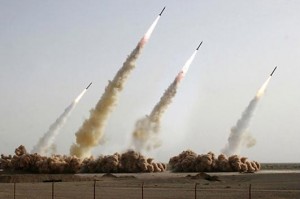Most Chinese reporters are in poor health because of heavy smoking and a sedentary lifestyle, Chinese state media reported on Friday.
Tag Archives: state media
Online Journalism China: Fake news feeds public mistrust in media
Chinese sports writer Wang Xiaoshan has used the controversy over the age of China’s double Olympic gold medallist, He Kexin, to open a wider debate on the prevalence of so-called fake news.
The original case against He stemmed largely from Chinese press reports, both state-run and independent, that gave her age as 13 in the run up to the Games, and therefore below the minimum age of 16 required to take part in the gymnastic competition.
That such a wide variety of sources could all be prone to the same inaccuracy seems unlikely, but in a piece sourced from Wang’s blog and translated by John Kennedy at Global Voices, Wang suggests such mistakes are symptomatic of ‘many media’s pre-existing problem of making up news’.
According to Wang, there is ‘no way that He Kexin could have forgotten her own age’, and the widespread reports suggesting she was 13 were the result of laziness and an unwillingness on behalf of journalists to verify their sources.
China has been plagued by fake news for some time:
The most recent case comes from the official newspaper of Guangdong province, the Nanfang Daily, in which a reporter claims to have witnessed police foiling a terrorist bomb plot in the city’s airport.
If the journalist had listed the police as his source his story may have escaped unnoticed, but saying the story came from unnamed ‘travellers in the airport’, who were privy to the hijackers’ intentions, sparked a wave of incredulity amongst the paper’s web community.
In another instance, national broadcaster CCTV was lambasted for releasing footage that apparently showed Olympic volunteers donating money in support of the May 12 earthquake relief effort, only for eagle-eyed viewers to point out that the ‘donors’ did not actually put any money into the collection boxes.
The latter example is an obvious instance of propaganda designed to unite the country in the wake of a devastating disaster, but the commercial press is equally culpable.
According to David Bandurski, a journalist and researcher at China Media Project, the proliferation of fake news is the result of Chinese media’s struggle to redefine its role in the wake of the curtailment of government subsidies in the mid to late 1990s.
The withdrawal of the government’s financial support was not coupled with a loosening of the shackles of state control. As such, Chinese media faces an intense battle to attract readers and advertising revenue, but is stymied by both the perception and the reality that it is not free to report, or sell, the truth.
This catch 22 situation is best evidenced by a controversy that erupted in July 2007 when a local TV report showed Beijing street vendors making buns using waste cardboard and pork fat. National state media also ran the piece and it gained international prominence, but authorities later claimed the freelance reporter responsible had faked the footage.
This left the public suitably perplexed as to whom to trust, and deeply undermined confidence in the veracity of Chinese media reports. Many believed the story was damaging enough to warrant a cover-up by the government as it fell at a time when China faced significant international pressure over its food safety record.
Beijing responded by launching a campaign against freelancers.
Bandurski notes that such government-backed campaigns punish the individual journalists responsible without ever reviewing the ‘the deeper institutional causes’ that allow fake news to proliferate. He draws a parallel with the punishment of corrupt officials, who are seen as ‘isolated moral deviants’ rather than products of a system that is at its root corrupt, or at least encouraging of corruption.
Fake news will continue to be filed, whether intentionally or as a result of bad practice, until Chinese media finds a way to sell truth as a commodity and regain the public’s trust.
Yet a sceptical public that questions what it reads can only be a good thing: a healthy mistrust of officialdom may, over time, spur alternative news sources to find ways to supply readers with the truth, reducing the need for sensationalist fake news in the process.
Spot the difference: AFP withdraws ‘digitally altered’ missile shot
Agence France-Presse (AFP) has retracted a photo of Iranian missile tests published this morning, stating the image had been ‘apparently digitally altered’ by Iran’s state media, the New York Times’ Lede section reports.
It was too late for the print editions of the LA Times, Financial Times, Chicago Tribune and others, who ran the pic on the front page, and for the BBC, New York Times and Yahoo News websites.
Below – spot the difference between 1) the AFP’s image…

…and 2) an image later obtained by the Associated Press:

According to the Lede’s report, the agency said the fourth missile may have been added to mask a grounded missile that failed to launch during the test.
Reuters: China becomes world’s largest Internet population
China has moved past the US as the country with the most internet users, it was reported by Chinese state media.
According to Reuters, Xinhua news agency quoted the China Internet Network Information Centre, claiming that the number of internet users in the country had risen to 221 million by the end of February – surpassing the number of internet users in the US for the first time.